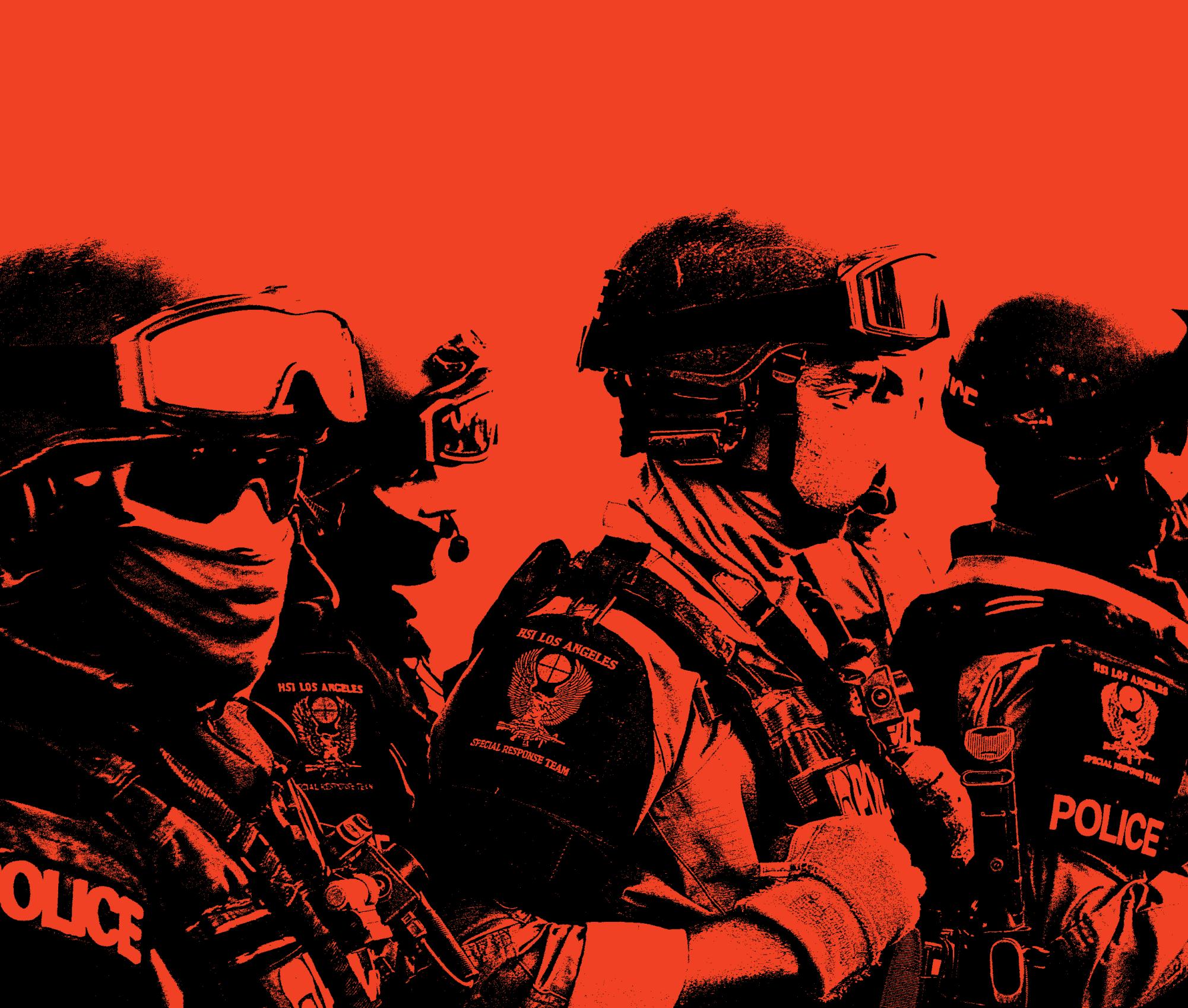Anxiety. It’s the only word that can accurately describe the feeling of walking through the hallways of your high school fretting that you might be next. ICE could come for you, your mom or your dad next. Even in class or at lunch, the anxiety is always there..
And if not you, your mom that is now too scared to go to work, or your dad who is trying his best to put on a brave face even though you know that he is also scared. Your head is filled with a million different what ifs:“What if they send us back?,” “What if dad loses his job?,” “What if my little brother, the only American-born member of my family, is left alone while the rest of us are detained?.”
This is the reality that many immigrant students now face under President Donald Trump’s new immigration policies, which include increased border security, expanded deportations and mandatory registration.
For many students, the fear is having ICE walk onto school grounds, an issue that is a very real possibility according to Samantha Barrientos from the Coalition for Humane Immigrant Rights (CHIRLA).
“If it’s an open area, that’s public, immigration can walk onto the campus,” she said. “And from personal experience and from other friends that I know, there have been instances where immigration comes onto campus. There is no warning sent to the students. There’s only students looking out for each other.”
While to many Americans, these policies might have proven to be effective because of ICE raids at many workplaces and high schools, Ms. Barrientos sees these “demonstrations” as a way for the current administration to instill fear in the immigrant community.
“Unfortunately, sometimes when ICE shows up on school campuses it’s not even to detain someone, it’s just simply to bring up fear,” she said. “That’s really all that it comes down to. Sometimes they just show up because somebody requested them to do a presentation, but they show up with dogs and multiple cars and act as if they’re actually looking for somebody.”
Many people don’t realize that immigrant communities have long been vulnerable to deportation and educational barriers.
“A surprising number of people don’t know that a lot of immigrants are victims of human trafficking,” she said. “Recently it was discovered that in Riverside a lot of fruit vendors are victims of human trafficking that are just dropped off in certain places, are told to sell for the day, and then they’re picked up, and they don’t know where they are. They don’t know what day it is, they just know that they work. And so a lot of the times, due to the isolation of being in a state — a place — where you don’t know, it’s easy to become a victim.”
The policies have succeeded in creating fear, with school enrollment declining across Los Angeles.
“These policies affect students primarily in terms of attendance,” she said. “Especially for students that are in elementary. I’ve already heard reports from colleagues of mine that work in elementary schools. They’ve seen a sharp decline in attendance from students. This is just primarily coming from the fear of the policies that are in place right now.”
High schools, especially with large immigrant populations like Van Nuys, have also seen a decrease in enrollment, out of both fear and necessity.
“Decrease in enrollment doesn’t even necessarily have to do with the immigration policy, but more so the situation that it creates in terms of needing to work, needing to provide for the family, because a family member was detained and now there’s one less provider in the home,” she said. “What we’ve been seeing now is that the students are even more absent because the student is working locally to provide for the family.”
Some schools have begun closing due to declining enrollment, but also due to a lack of funding.
“One thing that I have seen that isn’t impacting specifically the Los Angeles Unified School District (LAUSD), but that is affecting charter schools is the president reducing funding for public education,” she said. “So this means that there are charter schools that are now at risk of closing down due to the fact that they simply are not going to receive the funding that they’re used to receiving.”
The funding cuts stem from another Trump’s administration policy dismantling the Department of Education, which the president has ordered through executive action.
The dismantling of the department would eliminate funding for programs like the Individuals with Disabilities Education Act (IDEA) which guarantees free public education for children with disabilities.
Many immigrant families are pulling their children from school or leaving the country entirely due to fear.
“Parents just don’t feel safe with their kids in school,” she said. “We have seen some high schools where a lot more students are switching to online schooling or just dropping out entirely. Mainly because of the fear, I think these policies are just accelerating the plans of a lot of families to go back to their own countries.”
For students and families who plan to stay, pursuing education in America has become increasingly risky, Barrientos said.
“It’s in between the lines of what these policies are implying and while students often use humor to cope with what’s going on, it’s my job to try to reassure students,” she said. “But mostly what we have is sometimes just the uncertainty of knowing but also kind of not knowing the school’s plan so, there’s a lot of what ifs.”
The uncertainty has made college applications and financial aid particularly risky for undocumented students.
“Right now where we’re seeing the biggest issue is where they are telling parents to do a risk assessment before applying for FAFSA,” she said. “It’s a very fine line. If your family is already exposed to the federal government in this manner they say it’s alright to apply, but if you’re not exposed, they tell you that you might not want to fill it out to not raise any flags that your parents aren’t documented. No administration has ever used financial aid information to pursue undocumented students, but that doesn’t mean that a future administration can’t.”
LAUSD and organizations like CHIRLA offer numerous resources to help immigrant families stay safe and informed, according to Barrientos.
“Oftentimes we do know your rights workshops and students still ask their teachers ‘okay, but what if this?’,” she said. “So I do my best to try to also involve the teachers in the know your rights presentations. So that way they are as aware as possible, of as many what ifs that we can control, but also just remind people that there are other parts that we are simply not in control.”
This level of support from LAUSD and California is unique compared to most states, Barrientos said
“California has strongly advocated being pro immigrants since it was heavily a red state before the 90s,” she said. “A lot of people don’t know that this used to be one of the most anti-immigrant states until Prop 187 passed and people started protesting. Prop 187 served to ban undocumented students from receiving public education and because of this, a lot of the rights advocates started fighting to overturn a lot of the really racist and anti immigrant laws that were in the state.”
This also connects to California’s large immigrant population, fostering a sense of community.
“Also, just due to the fact that we have a huge immigrant population, a lot of people see that immigrant community as their community,” she said. “So they look out for one another.”
Many organizations have responded by educating people about their rights and available resources
“There’s a lot of work being put into the state and to ‘know your rights,’” she said. “So many organizations are teaching people what you do in a bad situation and even at school we have resources to be able to do rapid response networks where somebody can respond immediately if ICE is outside your door.”
Ms. Barrientos emphasized that LAUSD is doing everything possible to keep students and their families safe.
“Other institutions aren’t willing to stand up for students in the way that LAUSD has demonstrated and shown,” she said. “LAUSD has invested a lot into making sure that students have those resources and we’re not seeing that the college’s primarily student lead.”
As the fall semester begins and the hallways fill with students, the anxiety remains, but now, alongside the fear, there’s something else — determination.
For many students across Los Angeles, the choice isn’t really between education or deportation, It’s about finding the courage to pursue both their dreams and their safety, one school day at a time.
This article originally appeared in the Summer 2025 print edition.






